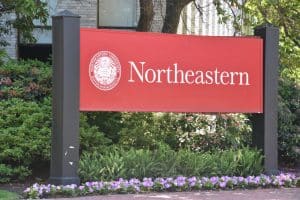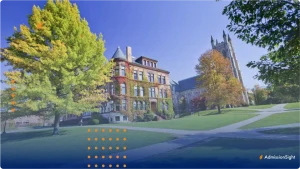Harvard vs MIT: Which School is Right for You?
Choosing Harvard vs MIT can be a daunting task for anyone considering pursuing a higher education degree. These two world-renowned institutions offer top-notch academic programs, research opportunities, and cutting-edge facilities. So, how do you decide? In this article, we’ll take a closer look at the options to help you make an informed decision.
What to Consider When Choosing Between Harvard and MIT
There are many important factors to consider when deciding Harvard vs MIT. Some of the key considerations include academic programs, campus culture, research opportunities, career prospects, admissions requirements, financial aid, social scene, student life, extracurricular activities, faculty quality, facilities and resources, housing options, location, and alumni networks. Let’s take a closer look at each of these factors.
One important factor to consider when choosing between Harvard and MIT is the academic programs offered by each institution. While both schools are renowned for their STEM programs, MIT is often considered the top choice for engineering and technology, while Harvard is known for its strong liberal arts and business programs.
It is important to research and compare the specific programs and departments that interest you to determine which school is the best fit for your academic goals.
Harvard vs. MIT: A Brief History of the Rivalry
Harvard, founded in 1636, is the oldest institution of higher education in the United States. MIT, founded in 1861, is a relatively younger institution but has quickly risen to prominence as a leader in science and technology. The rivalry between these two campuses is strong and dates back centuries. Even today, the rivalry between Harvard and MIT continues to thrive.
The rivalry between Harvard and MIT is not just limited to academics. The two institutions also compete in sports, with the annual Harvard-MIT Regatta being one of the most anticipated events of the year. The rivalry has also extended to the business world, with many Harvard and MIT alumni going on to become successful entrepreneurs and competing against each other in the tech industry.
Despite the intense competition, there is also a sense of camaraderie between the two institutions. Many Harvard and MIT faculty members collaborate on research projects and share resources. Additionally, the close proximity of the two campuses in Cambridge, Massachusetts has led to a vibrant intellectual community that benefits both institutions.
The Academic Programs at Harvard and MIT Compared
Harvard and MIT offer a wide range of undergraduate and graduate academic programs. Harvard is known for its liberal arts programs and strong foundations in the humanities, social sciences, and natural sciences. MIT, on the other hand, is known for its strong programs in science, engineering, and technology.
Both institutions offer a wide range of majors, minors, and specializations, which helps students explore their interests and find the right academic path for them.
Harvard has a long-standing tradition of offering a well-rounded education that emphasizes critical thinking, communication, and problem-solving skills. The university’s undergraduate program is designed to provide students with a broad-based education that prepares them for a variety of careers and graduate studies. Harvard also offers a range of graduate programs, including law, business, medicine, and education.
MIT, on the other hand, is known for its cutting-edge research and innovation in science and technology. The university’s undergraduate program is focused on providing students with a strong foundation in math, science, and engineering, while also encouraging them to explore other areas of interest. MIT also offers a range of graduate programs, including computer science, economics, and management.
Campus Culture: How Harvard and MIT Differ
Harvard and MIT have distinct campus cultures. Harvard has a traditional, Ivy League feel but also embraces diversity through its commitment to admitting students from all backgrounds. MIT, on the other hand, has a more collaborative, entrepreneurial spirit, and is known for its research-driven approach to education. Campus culture is an important factor to consider because it can significantly impact your college experience.
One notable difference between the two campuses is the social scene. Harvard has a strong Greek life presence, with many students participating in fraternities and sororities. MIT, on the other hand, has a more low-key social scene, with students bonding over shared academic interests and extracurricular activities.
While both campuses offer a variety of clubs and organizations, the types of activities and events that are popular may differ. It’s important to consider your own preferences and priorities when choosing a college with a campus culture that aligns with your interests.
Top Research Opportunities at Harvard and MIT
Both Harvard and MIT offer top research opportunities for their students. Harvard’s research covers a wide range of fields, including medicine, physics, and more, and MIT’s research is concentrated on advancing technology and engineering. Students at both institutions have access to cutting-edge resources and opportunities to work with some of the most accomplished researchers in their fields.
Additionally, both Harvard and MIT have established partnerships with various research institutions and organizations, providing students with even more opportunities to engage in groundbreaking research.
Harvard has partnerships with the Dana-Farber Cancer Institute and the Broad Institute, while MIT has partnerships with the Woods Hole Oceanographic Institution and the Whitehead Institute for Biomedical Research. These partnerships allow students to work on interdisciplinary projects and gain valuable experience in their respective fields.
Admission Requirements for Harvard and MIT
Admissions standards for these two institutions are highly competitive. Both schools require strong academic credentials and top scores on standardized tests like the SAT and ACT. They also require strong essays, recommendations, and a well-rounded application. It is important to have a clear understanding of the admission requirements to maximize your chances of getting admitted.
In addition to the academic requirements, Harvard and MIT also place a strong emphasis on extracurricular activities and community involvement. They want to see that applicants have pursued their passions outside of the classroom and have made a positive impact in their communities. This can include volunteering, participating in clubs or sports teams, or pursuing personal projects.
Another important factor in the admissions process is demonstrated leadership potential. Harvard and MIT are looking for applicants who have shown leadership skills in their academic, extracurricular, or community activities. This can include taking on leadership roles in clubs or organizations, starting a new initiative, or demonstrating leadership in a group project.
Financial Aid and Scholarships: Comparing Harvard and MIT
Both Harvard and MIT offer generous financial aid packages to their students. However, the specific policies and criteria for each institution may differ, and it’s important to understand those differences to make an informed choice about financial support.
At Harvard, financial aid is need-based, meaning that it is awarded based on a student’s demonstrated financial need. This includes factors such as family income, assets, and expenses. Harvard also has a “no-loan” policy, which means that students who receive financial aid are not required to take out loans to cover their education costs.
The Social Scene at Harvard vs MIT
In comparing Harvard vs MIT, both have vibrant social scenes, but they differ in significant ways. Harvard students tend to be more focused on academics and a traditional college experience, while MIT students are more likely to engage in co-curricular activities, innovation, and entrepreneurship. It is important to consider how the social scene at each school aligns with your interests and priorities.
Additionally, Harvard has a strong emphasis on its residential house system, which fosters a sense of community and belonging among students. Each house has its own unique culture and traditions, and students often form close bonds with their housemates.
On the other hand, MIT has a more decentralized social scene, with a variety of clubs and organizations catering to different interests. This allows students to explore a wide range of activities and meet people with diverse backgrounds and passions.
Student Life: Living on Campus at Harvard and MIT
Both schools offer a variety of housing options for students, including dorms, apartments, and off-campus living. Harvard tends to offer more traditional dorm-style housing, while MIT offers more housing options that encourage innovation and entrepreneurship such as co-living units and start-up incubators. Understanding your options is key to finding the best housing situation for your college experience.
Living on campus at Harvard and MIT also provides students with a unique opportunity to fully immerse themselves in the academic and social culture of the schools. Both campuses offer a wide range of extracurricular activities, clubs, and events that allow students to connect with their peers and explore their interests outside of the classroom.
Additionally, living on campus provides easy access to campus resources such as libraries, study spaces, and academic support services. Overall, living on campus at Harvard and MIT can enhance your college experience and help you make the most of your time at these prestigious institutions.
Extracurricular Activities: What’s Available at Harvard and MIT?
There are a wide variety of extracurricular activities available at both schools. Harvard offers an enormous range of student-led clubs and groups that focus on everything from debate to community service, while MIT excels in clubs related to technology and innovation. It is essential to consider how each school’s extracurricular activities align with your interests and passions.
Additionally, both Harvard and MIT offer a plethora of sports teams for students to participate in. Harvard has a long-standing tradition of excellence in sports, with over 40 varsity teams, while MIT has a strong focus on intramural sports and offers a variety of club teams. Whether you are a seasoned athlete or just looking to stay active, there are plenty of opportunities to get involved in sports at both schools.
Faculty Quality: Comparing Professors at Harvard and MIT
Harvard and MIT are renowned for having some of the most brilliant and accomplished faculty in the world. Both institutions are home to Nobel Laureates, MacArthur “geniuses,” and other award-winning scholars. It is important to consider the quality of the faculty when choosing an institution because they will be instrumental in shaping your learning experience.
However, while both Harvard and MIT have exceptional faculty, there are some differences in their teaching styles and research focuses. Harvard is known for its strong emphasis on the humanities and social sciences, with renowned professors in fields such as literature, history, and political science.
On the other hand, MIT is known for its strength in STEM fields, with professors who are leaders in areas such as engineering, computer science, and physics.
Facilities and Resources: Which School Offers More?
Both schools offer top-notch facilities and resources for their students. From advanced laboratories to state-of-the-art libraries, students at Harvard and MIT have access to some of the best academic resources in the world. Understanding the specific facilities and resources available at each school can help you make an informed decision.
Harvard University boasts a vast array of research centers and institutes, including the Harvard Stem Cell Institute and the Harvard-Smithsonian Center for Astrophysics. These centers provide students with unique opportunities to engage in cutting-edge research and collaborate with leading experts in their fields.
On the other hand, MIT is renowned for its engineering and technology programs, and its facilities reflect this focus. The campus features numerous engineering labs, including the MIT Media Lab and the MIT Nuclear Reactor Laboratory, which offer students hands-on experience with advanced technologies and equipment.
Location Matters: Differences Between Cambridge, MA (Harvard) and Cambridge, MA (MIT)
Both Harvard and MIT are located in Cambridge, Massachusetts, which has a lot to offer. However, the specific location of each campus has its unique benefits and drawbacks. Harvard is located in a more traditional, residential part of Cambridge, while MIT is in a more urban area with closer proximity to downtown Boston. It’s important to consider how the location of each school can impact your overall college experience.
One of the benefits of Harvard’s location is its proximity to the Charles River, which provides a beautiful backdrop for outdoor activities such as rowing, kayaking, and jogging. Additionally, Harvard Square, located just a few blocks from campus, is a bustling area with a variety of shops, restaurants, and entertainment options.
On the other hand, MIT’s location in the heart of Cambridge’s tech hub provides unique opportunities for students interested in entrepreneurship and innovation. The campus is surrounded by startups, venture capital firms, and established tech companies, making it an ideal location for students interested in pursuing careers in the tech industry.
Additionally, MIT’s location provides easy access to Boston’s many cultural attractions, such as museums, theaters, and historical landmarks.
The Application Process for Harvard vs MIT
Applying to Harvard and MIT is a highly competitive process that requires preparation and attention to detail. It’s important to understand the application process for each school, including standardized test requirements, deadlines, and required essays that are unique to each program.
One major difference between the application processes for Harvard and MIT is the emphasis on extracurricular activities. While both schools value well-rounded applicants, Harvard places a greater emphasis on extracurricular involvement and leadership, whereas MIT focuses more on academic achievements and research experience.
Another important factor to consider is the acceptance rate for each school. Harvard has a lower acceptance rate than MIT, making it more difficult to gain admission. However, both schools have highly selective admissions processes and require applicants to have exceptional academic records and impressive extracurricular achievements.
Alumni Networks: Which Offers More Connections?
Harvard and MIT have highly connected and influential alumni networks that can offer significant benefits to their graduates. Both schools have produced some of the most successful and influential leaders in various fields. It is important to consider how these alumni networks can help advance your post-graduation goals.
However, it is not just the Ivy League schools that have strong alumni networks. Many state universities and smaller colleges also have active alumni associations that offer networking opportunities, mentorship programs, and job placement assistance. These networks can be especially helpful for graduates who are looking to establish themselves in a specific geographic region or industry.
Additionally, alumni networks are not just beneficial for recent graduates. They can also be valuable resources for mid-career professionals who are looking to make a career change or expand their professional network. Many alumni associations offer events and programs specifically designed for alumni at different stages of their careers.
Conclusion
Choosing the right institution is an important decision, and comparing Harvard vs MIT requires careful evaluation of several key factors.
Understanding the academic programs, campus culture, research opportunities, career prospects, admissions requirements, financial aid, social scene, student life, extracurricular activities, faculty quality, facilities and resources, housing options, location, and alumni networks can help you make an informed decision. We hope this guide has provided valuable insights to help you navigate this important decision.
It is important to note that while Harvard and MIT are both prestigious institutions, they have distinct differences in their approach to education. Harvard places a strong emphasis on the liberal arts and humanities, while MIT is known for its focus on science, technology, engineering, and mathematics (STEM) fields. Therefore, it is important to consider your academic interests and goals when making a decision between the two.
Additionally, it is worth considering the size of each institution. Harvard has a larger undergraduate population, with over 6,700 students, while MIT has just over 4,500. This can impact the sense of community and the level of individual attention you may receive from faculty and staff. It is important to weigh the benefits and drawbacks of a larger versus smaller institution when making your decision.
Want to learn more about getting into your dream school? You’ve come to the right place. At AdmissionSight, we have over 10 years of experience guiding students through the competitive admissions process.
AdmissionSight can help you put your best foot forward when applying to college this fall. Contact us today for more information on our services.









































